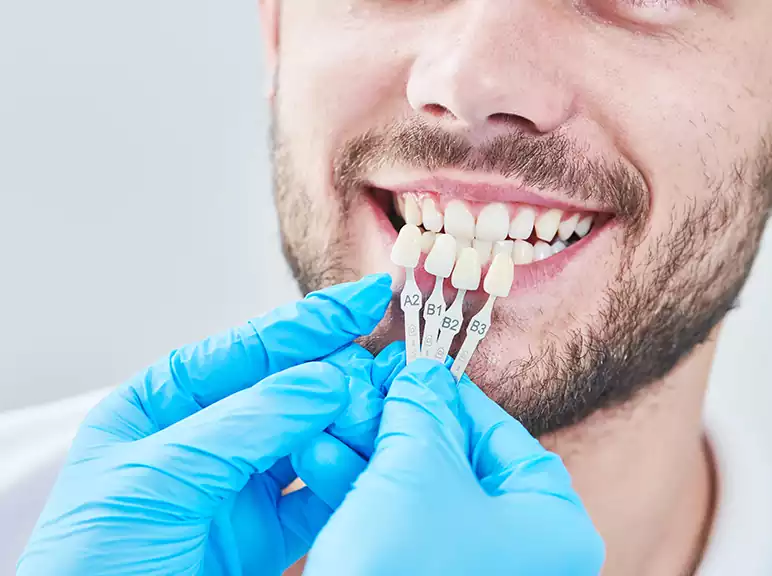Root Canal Treatment
Root canal treatment are dental procedures which are also popular as (endodontics) used for treating infection in the centre of a tooth. Root canal treatment isn’t excruciating and may save a tooth that could otherwise have to be removed entirely.
Why is it needed?
The infection in the middle of the tooth (root canal) is caused by bacteria which live within the mouth and infect the tooth.
When is root canal treatment required?
Root canal treatment is only needed if dental x-rays display that the pulp has been affected by a bacterial infection. The pulp will begin to die if the bacteria are infected, allowing the bacteria to multiply and spread.
Symptoms of pulp infection usually include:
- Pain or discomfort while drinking or eating hot or cold food
- Pain when you bite or chew
- The Lost Tooth
Eventually, you will get additional symptoms, such as:
- Pain when you bite or chew back
- Gum swelling near the affected tooth
- The pus oozing from the tooth affected
- Swelling of the face
- The tooth is becoming a darker colour.
How root canal treatment is performed
It’s essential to remove the bacteria to treat the root canal infection. Either could do it:
- Bacteria removal from the root canal system (root canal treatment)
- Tooth removal (extraction)
But trying to remove the tooth is not usually recommended, as it is essential to keep most of your natural teeth as possible. Once the bacteria are removed, root canal is filled, and thus the tooth is sealed with a filling or crown.
Recovering from root canal treatment
When recovering from root canal treatment, it’s essential to look after your teeth. You must avoid biting on hard foods until treatment is complete. Your restored tooth must no longer be painful after your final treatment, although it may feel sensitive for a few days.
You may take over-the-counter painkillers, like paracetamol or ibuprofen, to relieve any discomfort and pain. Return to the dentist if you still have swelling and pain after taking painkillers. In most cases, further root canal treatment may be prevented:
- by keeping your teeth clean
- by not overeat sugary food
- by renouncing smoking if you smoke
How to do this — Root Canal Treatment
Preparation for a root canal treatment
Before the root canal treatment, the dentist may consider taking a series of X-rays of the affected tooth. It allows them to create a clear image of the root canal and to assess the extent of any damage. Root canal treatment is generally performed under a local anaesthetic, an analgesic medicine that numbs your infected tooth and the gum around it.
Removal of the pulp
Our dentist will put a rubber sheet (dam) around your tooth to ensure that it is dry during treatment. The dam also protects you from swallowing or breathing in any chemical substances used by the dentist. Our dentist will open your tooth through the crown, the flat part at the top, to the soft tissue at the middle of your tooth (pulp). They will remove the infected pulp that remains.
Cleaning and filling of the root canal
Once the pulp has been taken away, the root canal will be cleaned and enlarged by the dentist. The root canal is usually very narrow, making it difficult to fill. Our dentist will use a series of small files to enlarge the canals also make them a regular shape so that they can be filled. This aspect of the treatment may take several hours and may need to be performed during several visits. Your front incisor as well as the canine teeth (biting teeth) generally have a single root containing one root canal. Therefore, more roots a tooth has, the
longer, it takes to complete the treatment.
Sealing and fixing your tooth
During your next visit, the temporary filling and the medicine inside the tooth will be removed and then root canal filling will be inserted. It along with the filling seals the tooth and prevents re-infection. Root-filled teeth are more likely to damage than healthy unrestored teeth, so your dentist may suggest that you place a crown on your tooth to protect it. In certain instances, a root-filled tooth may darken, especially if it dies as a result of injury, such as knocking on a tooth.
Adding a crown
The crown is a cap that completely covers a real tooth. After root canal treatment, it may be essential to use a crown to prevent fractures in the teeth. Crowns can be made from the following:
- Metal and porcelain (or both)
- Ceramic material
- powdered Glass
Our dentist will reduce the size of your tooth and use the crown to replace what is removed.
The mold of your tooth will be used to ensure that the crown is of the right size and shape and fits your tooth precisely. When the crown is fitted, the cement is used to glue the crown to the trimmed-down tooth.
How successful is root canal therapy?
Root canal treatment is usually successful in saving the tooth and clearing the infection. About 9 out of 10 root-treated teeth survive for 8 to 10 years. Having a crown on the tooth after root canal treatment is essential for improving the survival rate of the teeth. Your treated tooth must survive for a long time if you keep your teeth clean. Your tooth’s survival depends on several factors, including:
- How much of the natural tooth is left?
- How well do you keep your teeth clean?
- The biting forces on your tooth








